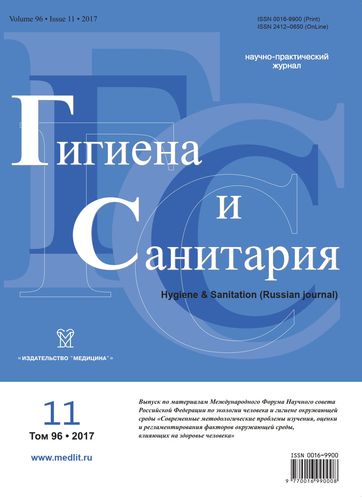Comparative data of the performance of the approved method and its modification for the parasitological analysis of the soil for the availability of helminth eggs
- Authors: Kuznetsova K.Y.1,2, Aslanova M.M.3,2, Gritsuk O.V.2, Zhnakina Z.V.1, Kuznetsova M.A.1
-
Affiliations:
- I.M. Sechenov First Moscow State Medical University
- Center for Strategic Planning and Management of Biomedical Health Risks
- Center for Hygiene and Epidemiology in Moscow
- Issue: Vol 96, No 11 (2017)
- Pages: 1119-1120
- Section: METHODS OF INVESTIGATIONS
- Published: 21.10.2020
- URL: https://ruspoj.com/0016-9900/article/view/640760
- DOI: https://doi.org/10.47470/0016-9900-2017-96-11-1119-1120
- ID: 640760
Cite item
Full Text
Abstract
There are comparative results of sanitary-parasitological studies of the soil in parallel test versions with the use of approved method (Romanenko, 1991.) and its modifications. There were obtained data confirming the decline in the efficiency of sanitary and parasitological research method of the soil (Romanenko, 1991) at the stage of repeated washing of the sample to 59%, the use of non-standardized procedures and aggravation of the technique due to the use of non-standard laboratory products. The efficiency of the soil examination for helminth eggs during the technical modification of the approved method (Romanenko, 1991) accounted of 65%. Modification of the individual procedures of a course of studies of the soil reduces the time costs of their performance, the excessive consumption of reagents, provides standardization of the number of studies from the same soil samples.
About the authors
Kamalya Yu. Kuznetsova
I.M. Sechenov First Moscow State Medical University; Center for Strategic Planning and Management of Biomedical Health Risks
Author for correspondence.
Email: kama.123@yandex.ru
MD, PhD, leading researcher of the Laboratory of Sanitary Bacteriology and Parasitology of the Center for Strategic Planning and Management of Biomedical Health Risks, Moscow, 119991, Russian Federation.
e-mail: kama.123@yandex.ru
Russian FederationM. M. Aslanova
Center for Hygiene and Epidemiology in Moscow; Center for Strategic Planning and Management of Biomedical Health Risks
Email: noemail@neicon.ru
Russian Federation
O. V. Gritsuk
Center for Strategic Planning and Management of Biomedical Health Risks
Email: noemail@neicon.ru
Russian Federation
Zh. V. Zhnakina
I.M. Sechenov First Moscow State Medical University
Email: noemail@neicon.ru
Russian Federation
M. A. Kuznetsova
I.M. Sechenov First Moscow State Medical University
Email: noemail@neicon.ru
Russian Federation
References
- Aslanova M.M., Kuznetsova K.Yu., Morozov E.N. Effective laboratory diagnosis is the basis for monitoring parasitic diseases. Zdorov’e naseleniya i sreda obitaniya. 2016; (1): 34–7. (in Russian)
- Dolbin D.A., Khamzina E.V., Idrisov A.M., Lutfullin M.Kh., Lutfullina N.A. Method for identifying eggs of helminths, mites and protozoan oocysts in soil-soil samples. Patent RF; № 2466388; 2012. (in Russian)
- Methodological instructions MUK 4.2.2661–10. «Methods of sanitary-parasitological research». Moscow; 2010. (in Russian)
- GOST R ISO / IEC 17025–2006. «General requirements for the competence of testing and calibration laboratories». Moscow; 2006. (in Russian)
- Onishchenko G.G. Criteria for the risk of environmental pollution. Gigiena i sanitariya. 2003; 82(6): 3–4. (in Russian)
- Decree of the Government of the Russian Federation No. 426 «On approval of the Regulations on social and hygienic monitoring». Moscow; 2000. (in Russian)
- Site of Rospotrebnadzor. Available at: http://www.rospotrebnadzor.ru/ (in Russian)
- Chernikova E.A., Migliorini L., Litvinov S.K., Darchenkova N.N., Novozhilov K.A. Geohelminthiases in the Russian Federation. Meditsinskaya parazitologiya i parazitarnye bolezni. 2015; (2): 51–4. (in Russian)
- WHO Expert committee on biological standartization. World health organization technical report series 658/33. Geneva; 1981.
Supplementary files









